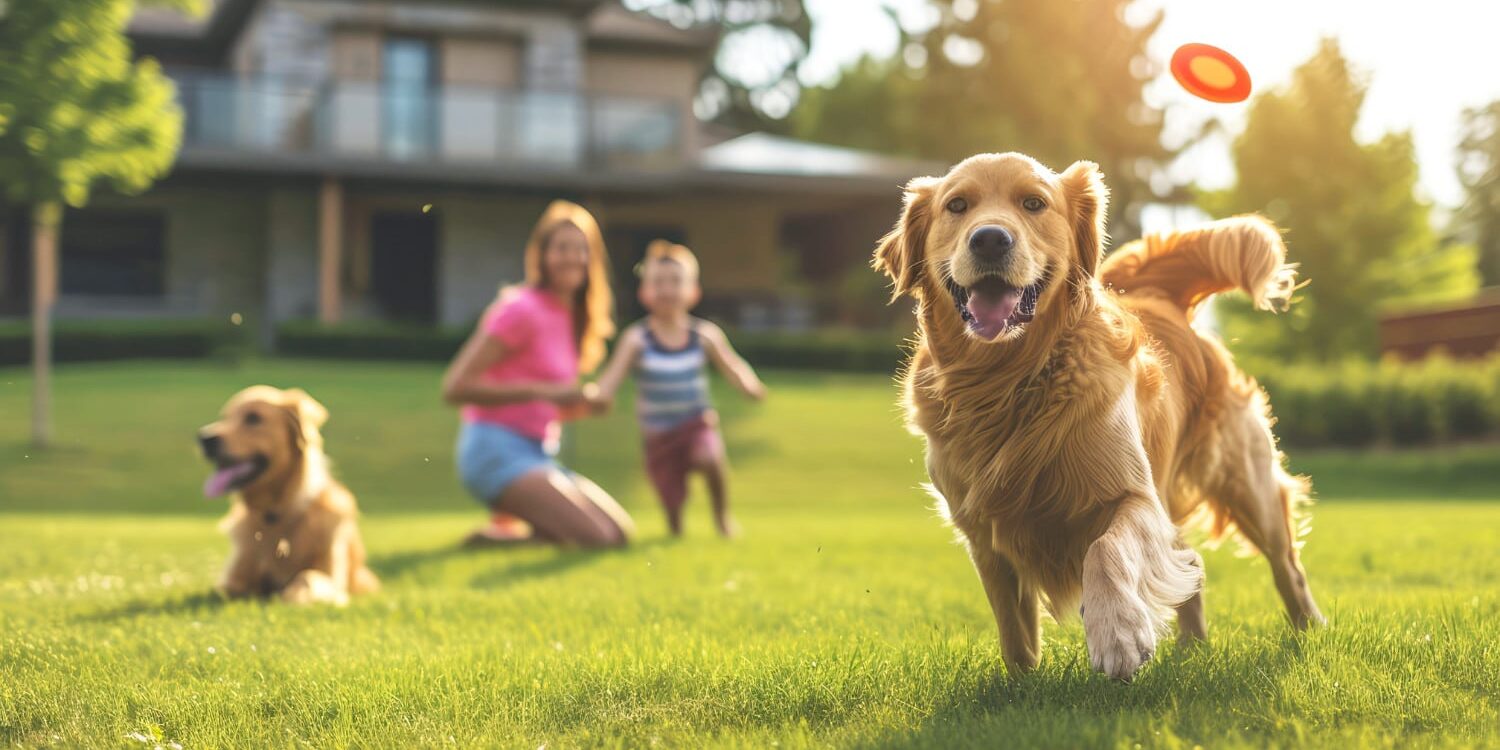Sharing our lives with dogs brings immense joy, but it’s no secret that our furry friends can wreak havoc on our lawns. From playful digging and energetic sprints to unavoidable bathroom breaks, our beloved dogs can leave our once-pristine grass looking patchy, brown, and riddled with holes. These lawn maintenance tips for dog owners will provide valuable insights and practical tips to minimize dog damage, maintain a healthy lawn, and even repair existing damage caused by our canine companions.
Preventive Steps to Safeguard Your Lawn
Frequent Walks
Regular walks are not only essential for your dog’s physical and mental well-being but also play a crucial role in reducing their urge to dig and run excessively in your yard. Aim for at least two daily walks to keep your dog happy and your lawn intact. This not only instils a healthy habit and routine for you and your dog, but also trains your dog to do their business in other locations besides just your home, another simple preventive measure to avoid patches on your lawn.
Designated Potty Zones
Designate specific areas in your yard where your dog is encouraged to do their business. This can be achieved by using pee pads or training your dog to use a particular corner. By concentrating their bathroom activities in designated zones, you can minimise the spread of damage and streamline the cleanup process.
Prompt Cleanup and Restoration
Dog waste, particularly urine, is highly acidic and can quickly scorch and damage your grass. Act promptly by removing waste as soon as possible and rinsing the area with water. For urine spots, consider using a neutralising product specifically designed for pet urine. If damage has already occurred, you can repair it by reseeding or patching bare spots to restore your lawn’s lushness, or use fertilizer to revive yellow dead patches.
Lawn Care Tips for Dog Owners
Proper Irrigation
Adequate watering is paramount for maintaining a healthy lawn, especially one frequented by dogs. A well-hydrated lawn is more resilient to wear and tear caused by dog activities. Ensure your lawn receives deep watering less frequently, preferably in the early morning to minimise evaporation and reduce the risk of fungal diseases.
Sow Tolerant Grass Type
Certain grass varieties are naturally more resistant to dog traffic and urine. Consider reseeding your lawn with hardy grass types like Kentucky bluegrass, tall fescue, or perennial ryegrass. These grasses are renowned for their durability and ability to recover from dog-related damage.
Regular Mowing
Maintaining a slightly higher mowing height helps protect the grass roots from damage and encourages a denser lawn, making it more resilient to dog activity. Be sure not to cut your grass too short. Taller grass with deep roots, means a harrier lawn that can withstand those pesky yellow spots and lots of trampling.
Natural Fertilizers
Opt for organic or slow-release fertilizers to avoid exposing your dog to harsh chemicals. Natural fertilizers nourish the soil and promote healthy grass growth without posing a risk to your pet’s health.
Professional Lawn Clean-Up and Care
Sometimes, DIY efforts may not be enough to keep your lawn in top shape. If your lawn is struggling despite your best efforts, don’t hesitate to seek professional assistance. Lawn care companies specialising in pet-friendly services can provide expert advice, tailored treatments, and effective solutions to restore your lawn’s health and beauty. Here at Green Green Grass, we can address issues like compaction, soil imbalances, and pest infestations, ensuring your lawn thrives even with a furry friend around.
By implementing these proactive lawn maintenance tips for dog owners and incorporating them into your regular lawn care routine, you can strike a harmonious balance between enjoying the companionship of your dog, and maintaining and repairing a beautiful lawn that complements your home.
Want additional lawn care? Contact us today and we will be glad to get you a free quote and get your lawn looking great again!
FAQs
Dog urine is naturally high in nitrogen, which can “burn” your grass if concentrated in one spot. Diluting the area with water immediately after your dog urinates can help repair and prevent damage.
Tall fescue, Kentucky bluegrass, and perennial ryegrass are known for their durability and resilience to dog urine and wear.
Depending on the extent of the damage, you can reseed bare patches, apply a top dressing to level uneven areas, or aerate the soil to improve drainage.

